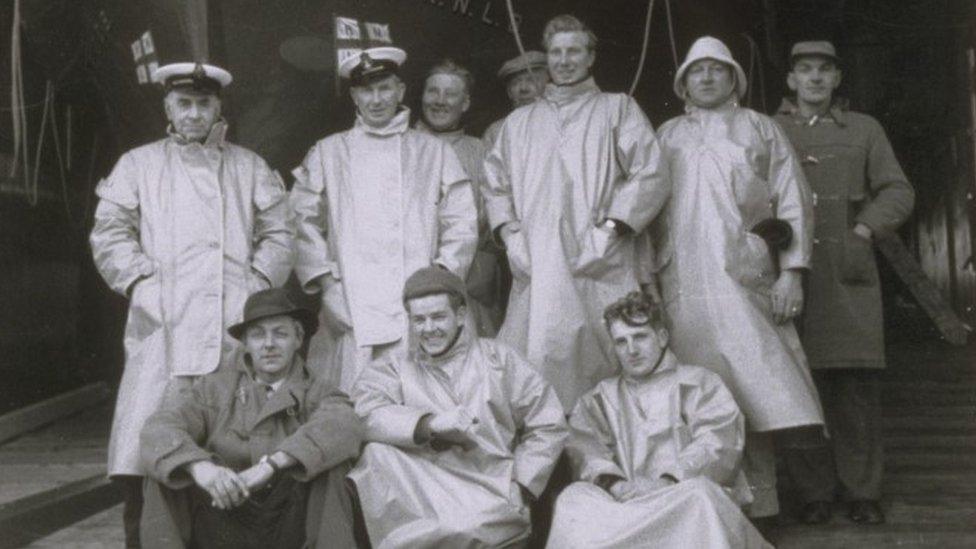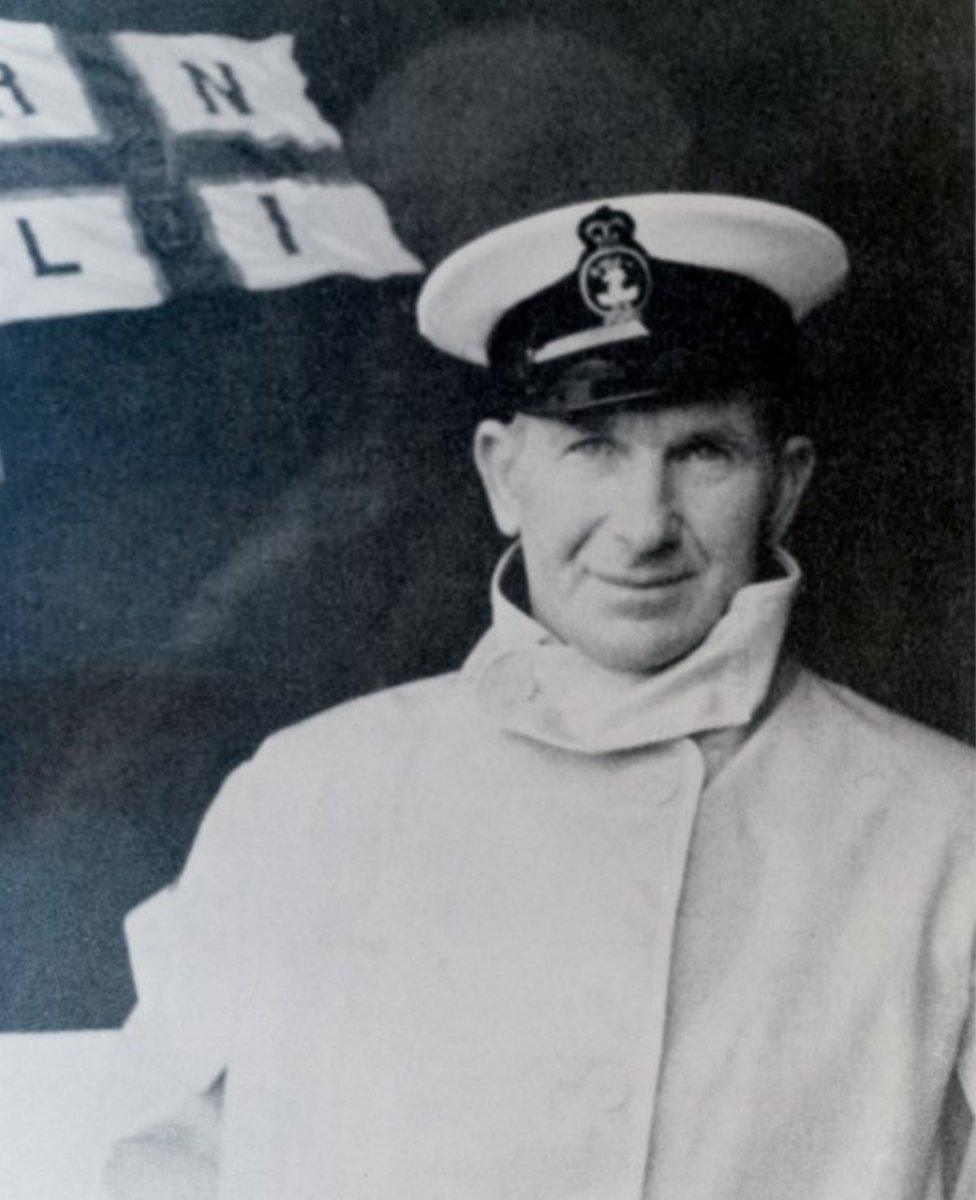Longhope lifeboat crew remembered 50 years on
- Published

Some of the crew who died in the tragedy (all wearing waterproofs) were back row, left to right, mechanic Robert Johnston, Coxswain Daniel Kirkpatrick, 2nd Coxswain James Johnston and crew member Robert Johnston and bottom row, middle assistant mechanic James Swanson and bottom right Bowman Ray Kirkpatrick. Eric McFadyen and crew member Jack Kirkpatrick are not pictured.
Eight men died when the Longhope lifeboat capsized on 17 March, 1969, after setting out late in the evening from Hoy in Orkney, to help the Liberian cargo ship Irene, which was adrift in a fierce storm.
The TGB, a 47ft (14m) Watson-class lifeboat constructed of wood, set off in conditions of near-zero visibility.

The loss of the wooden boat led to improvements in lifeboat design
A Force 9 gale, coupled with a spring tide, led to waves 60ft (18m) high.
The lifeboat is believed to have been overturned by a freak wave, possibly 100ft (30.5m) high.
The lifeboat was found at 13.40 the following day by Thurso's lifeboat. No-one on board survived.
When the boat was recovered, the bodies of all but one of the crew were inside the hull. The coxswain was still at the helm.
The body of James Swanson was never found.

How the disaster unfolded

The TGB is displayed at the Scottish Maritime Museum
March 17, 1969
21:15 - Irene grounds - reached by Coastguard teams.
21:28- Last radio signal from TGB.
21:30 - TGB is seen north of Pentland Skerries Lighthouse by the principal lighthouse keeper.
21:35 - Keeper sees TGB's stern light about a mile away to the east.
22: 00 - TGB fails to respond to a radio message.
March 18, 1969
01:30 - All Irene's crew safely brought ashore.
13:40 - Thurso lifeboat crew locate upturned hull of TGB, four miles SW of Tor Ness. Towed to Scrabster Harbour by Thurso lifeboat.

Angus Heddle and Geordie Taylor both helped launch TGB on its final shout.
Angus said: "Watching the boat going out the bay Malcolm McKay and me was the last two to leave the shed and we were stood in the lee of the shed.
"We stood there until we could see no more. We went home and listened on the radio.
"There was no signal, it was just dead."
Geordie said: "In the morning there was still nothing. About lunchtime it came over that the boat had been found upside down.
"It just floored the whole island. You just couldn't believe it.
"They'd been out on many a wild night and always came back. After it initially happened everybody seemed to muck together and the boys got another lifeboat.
"It was something that was never going out of your mind."


Coxswain Daniel Kirkpatrick was 59

The lost crew were:
Coxswain Daniel Kirkpatrick (59)
Second Coxswain James 'Jimmy' Johnston (30)
Bowman Ray Kirkpatrick (32)
Mechanic Robert Johnston (62)
Assistant mechanic James 'Jimmie' Swanson (59). His body was never found.
Crew member Robert 'Robbie' Johnston (27)
Crew member Jack Kirkpatrick (27)
Crew member Eric McFadyen (24)

On 22 May 1970, the Hilton Briggs became operational on Hoy with a new crew.
An inquiry into the loss of TGB found that all necessary precautions and procedures had been taken by RNLI and the Coastguard. The inquiry stated that TGB had capsized after being overwhelmed by "very high seas and maelstrom conditions".
The loss of TGB led to the development of self-righting lifeboats.
John Budge, who spent 39 years with the Brims lifeboat crew, said he has often thought of the men who set out on the Longhope lifeboat 50 years ago.
"The first times that we launched from Brims after the boat went back into the slip I can remember me passing under the roof beam and looking at the roof beam and thinking that was the last part of home those men saw, going under that beam, and I used to shudder went I went down there," he said.
"You'll never forget the respect we had for them all, never ever."